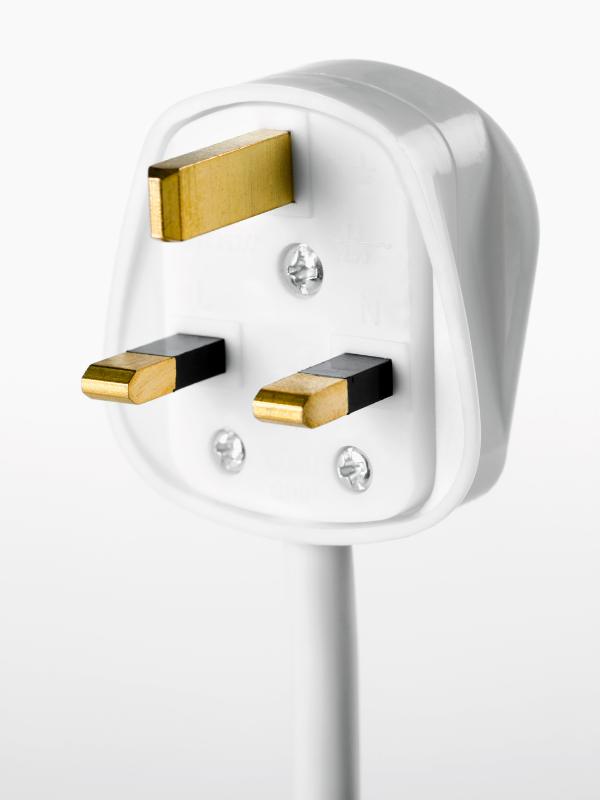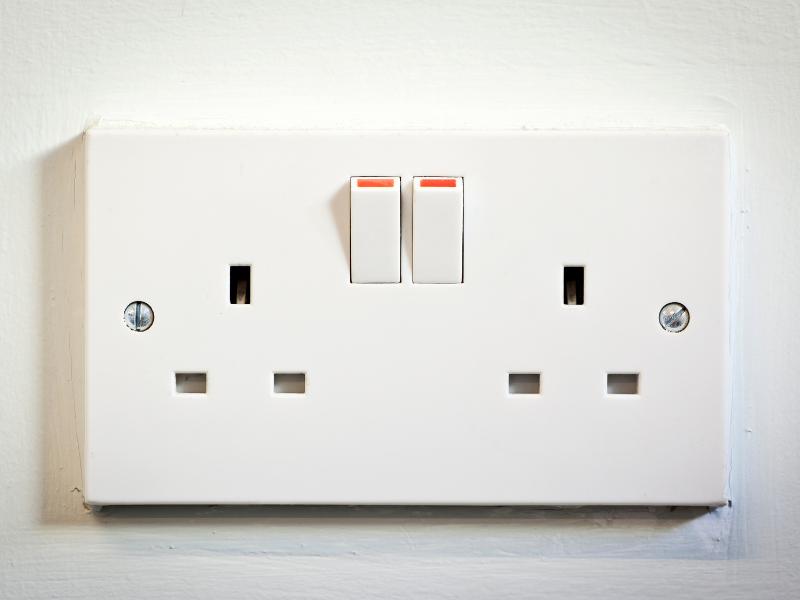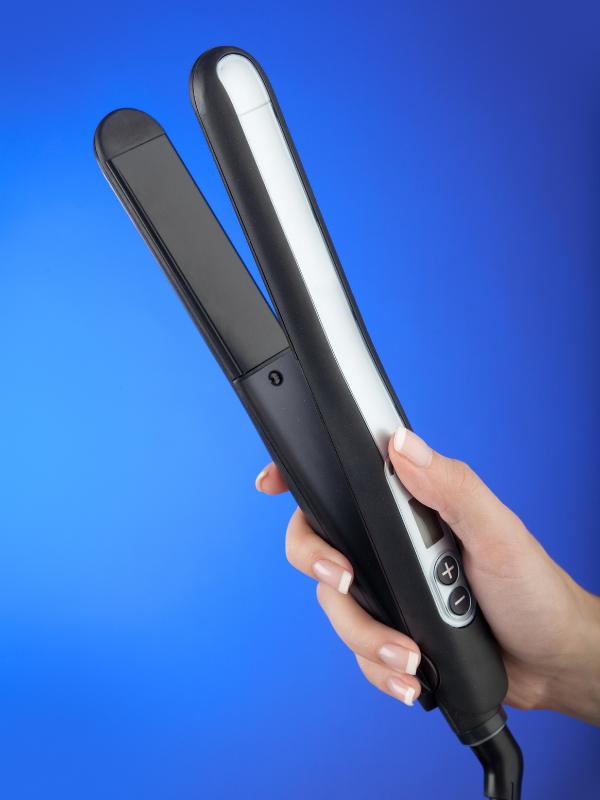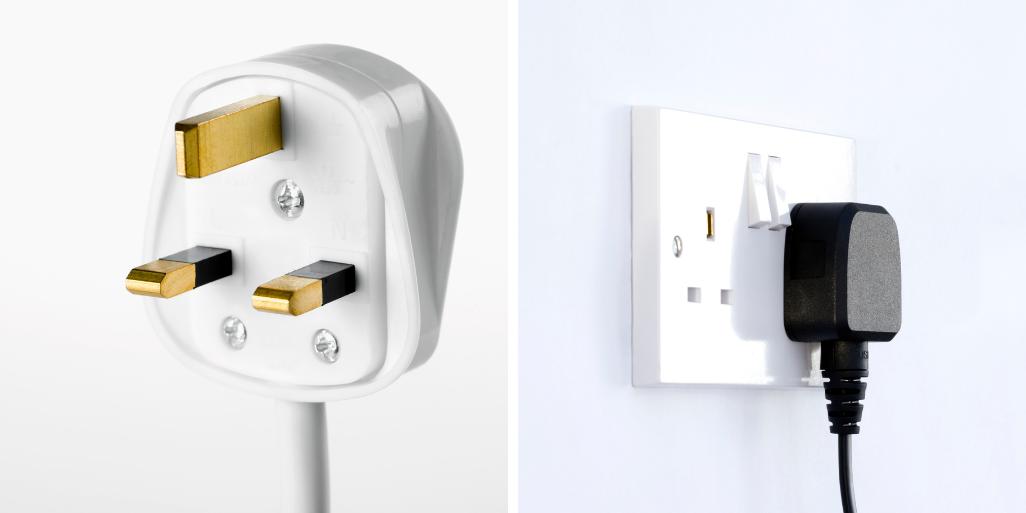Voltage in the UK [All You Need to Know)
One of the questions travellers from overseas ask most often when visiting London and the UK concerns using their appliances safely and the type of power sockets to expect access to while they’re there.
Can you, for example, plug in hair straighteners bought in the US or Australia, without the risk of them breaking or even blowing up in a ball of flame? What about charging cables for mobile devices?
OK, so perhaps we’re being just a tad dramatic. But from a practical point of view, UK mains voltage is a hot topic. If you’re wondering about what is UK voltage as standard, then this guide should put your mind at rest regarding how to use your electrical items in Great Britain.
Covered here is the full lowdown regarding UK electricity voltage. The type of sockets is also included, as well as how to equip yourself for UK power voltage before your trip begins. As the UK was until recently part of the European Union (EU), we also address the question of whether the UK plug voltage and type is the same as on the continent.
By the end of this article, you’ll have a better understanding of mains voltage in the UK. Read on to find out everything you should know – completely free of electrical jargon. And hopefully, in a way that’s neither boring nor nerdy. Let’s dive in!
- Voltage in the UK | The nuts and bolts of it
- Practical advice for using power in the UK
- Voltage in the UK – FAQs
- Does the UK use 110V or 220V?
- Can I use 120-volt appliances in the UK?
- When did the UK change to 240 volts?
- Why is UK voltage so high?
- Are Type G pin plugs used anywhere outside the UK?
- Does the UK and Europe have the same type of plugs?
- Are all plugs in Europe the same?
- Will my iPhone charger work in the UK and Europe?
- Voltage in the UK summary
Voltage in the UK | The nuts and bolts of it
You won’t really need to get involved with any nuts or bolts at all – we just liked the catchy subtitle 😉
Here is what you should know about Scotland, Wales, Northern Ireland and England voltage. Plus the power sockets providing the electricity for hotel and household voltage.
3 pin plugs + a switch
The UK uses very safe three pin plugs. These are really nice to use, as once your item is plugged in you’ll know for sure that it’s safely connected. With none of that wobbling about that you do get in some countries. They are known as ‘type G’ plugs.
The key thing for visitors from foreign shores to note is that these plugs are generally fitted with a switch. This isn’t always the case elsewhere. If you’re not used to it, realising and remembering to turn on the power each time can be a challenge!
In most cases, the power is on when the lower part of the switch is pushed in. And it’s off when the top lies more-or-less flush with the socket. This isn’t always true, but it is for the vast majority of the time.
So you may well need a power adaptor or two for your trip. If you come from a country such as the US, then this will be the case. You may also need the odd reminder to flick that power switch to the ‘on’ position!


UK mains voltage
The UK power supply voltage is 230 volts (or 230V – alternating current) and 50 hertz (or 50 Hz). So the type of adaptor you’ll need, if your electrical items are compatible with this voltage, is a three pin adapter. You can buy these in the UK from airport shops, larger supermarkets, chemists (pharmacies or drug stores) and stores that sell travel equipment.
Devices that are designed to be powered by a lower voltage may require a converter or transformer. You’ll also need to make sure your item is dual voltage. You can check if your device is dual voltage by looking for a voltage range marked on it, such as 110V–220V or 100-240V. This means the device is compatible with the voltage range noted.


UK power adaptors
So you should be able to buy UK power adaptors easily enough. Either before your trip, or after arriving in the UK. They’re not hard to come by. Remember, what these adaptors do is allow the plug from your own country to be fitted to the adaptor. You can then slot this UK adaptor into the socket.
This kind of adapter only converts the plug so that it will fit into UK sockets. It has no effect at all on the voltage of the power supply. For this you’d need a converter or transformer.
Most sockets still don’t have USB outlets, so you’ll need to connect your USB cables to power adaptors before you can plug them in for charging.
Read on for more practical tips regarding the UK’s power supply and how to use it.
Practical advice for using power in the UK
European and universal power adaptors
Don’t assume that because you’ve bought a UK power adaptor you’re all set for a side trip to mainland Europe. You’re not! Countries in Europe use different plug types than the UK, and therefore you’ll need a different kind of adaptor.
A universal adaptor can be ideal here. This converts plugs so they’ll fit into sockets in a range of countries and regions around the world. Typically this might include the US, the EU, the UK and Australia, for example.
USB charging cables
If you have charging cables for your smartphone, tablet, laptop or other devices, then they will work in the UK. What you do need, though, is that power adaptor so you can connect these to the socket.
Most charging cables have a USB connector at the end, and this may in turn be linked to a larger plug you slot into the power supply. It’s this you’ll need to switch over – unless the socket has USB outlets fitted. Some do, but it’s not yet standard in the UK.
Power converters
Converters are completely different from power adaptors. Think of the adaptor as the accessory that changes the shape, and the converter as one that can actually affect the voltage.
If you have devices that aren’t marked as being dual voltage (check the item itself, the instruction manual or with the manufacturer) then you may need a converter. If this sounds like a hassle, don’t stress. Most electricals are dual voltage, so in reality, very few people need to buy a converter.
Where to find power outlets in the UK
Hotel rooms should supply you with all the sockets you need to charge everyday items like your phone or power gadgets such as a hair styling tool.
Some trains in the UK have power sockets by the seats, though this isn’t always the case. You may also find them in places such as pubs and restaurants. If you’re not sure, ask before plugging in. Also, make sure you leave no trailing wires where someone could fall over them!
Voltage in the UK – FAQs
Does the UK use 110V or 220V?
In fact, the UK uses neither of these. The voltage is 230 Volts a.c and 50 Hz.
Can I use 120-volt appliances in the UK?
If you have an electrical item that requires 120-volt power, then you can use it in the UK – as long as you also use a converter. This can be a pain, so if you can get by without devices that aren’t dual voltage then it may be easier to leave those at home.


When did the UK change to 240 volts?
In 2003, the voltage used throughout the continent of Europe was set at 230V and 50 Hz. Before this, it was officially 220V in Europe and 240V in the UK.
Why is UK voltage so high?
The answer to this one might surprise you. Apparently, Europe opted for a 230-volt power supply because less copper wire was needed to deliver a higher voltage. This means power companies can deliver a more efficient supply.
Are Type G pin plugs used anywhere outside the UK?
You may wonder if you can use that power adaptor when travelling to other destinations in future. This type of plug – with three pins in a triangle – is also common in some other countries.
These include Ireland, Malta and Cyprus – as well as places in Asia, the Middle East and Africa. Such as Hong Kong, Tanzania, Singapore, Saudi Arabia, Malaysia and more. Some Caribbean islands also use three pin plugs, including St Lucia. They’re also used in the Seychelles.
Does the UK and Europe have the same type of plugs?
No, it may surprise you to learn that different plugs are used in the UK to those used in Europe. Mostly the Type C plug is used across mainland Europe, whereas Type G is standard in the UK. The good news is that type C adaptors are also compatible with type E, F, J, K and N sockets.
So if you’re visiting the UK and mainland Europe, then you’ll need to buy two adaptors. Or streamline the whole process by buying one universal adaptor instead. This type can be used all over the world.
The type C plug is also sometimes referred to as the Euro plug.
Are all plugs in Europe the same?
Apart from the UK and Ireland, all European countries use the Euro or type C plug. In Ireland or the UK, though, you’ll require an adaptor that can be fitted into the three pin G plugs used here. Or a universal adaptor that can be used anywhere.
Will my iPhone charger work in the UK and Europe?
The iPhone power adaptor has been designed for use worldwide, so yes it will. However you may need a three pin type G plug adaptor for the UK, or a type C one for Europe. Alternatively, a universal adaptor can take you across the globe.
You will not need a converter to use your iPhone in the UK, nor in Europe. Just the type of plug adaptor that travellers normally use.
Voltage in the UK summary
In summary, then it’s simple to charge and power up your devices while visiting London or the rest of the UK. All you’ll need in most cases is a three pin plug adaptor to fit into the wall sockets there.
In some cases, a different voltage means that a converter is required. If your appliance or device is dual voltage, though, you’re good to go. It may be marked on the item or in the instructions as something like 100-240V. This means the device can be used with any voltage within this range.
All most people need is an adaptor, as long as you don’t take any devices with you that aren’t dual voltage (most people don’t, if that helps). If you don’t have one already, it’s simplest to buy a universal adaptor, then you’re pretty much set for any country you ever care to visit.
If you do arrive unprepared, there’s still no need to stress. The power adaptors you’ll need can be bought all over the UK. Your hotel may also be happy to supply one if you ask nicely at the front desk!
Disclaimer – If in doubt about compatibility, do not use your appliance and risk hurting yourself or damaging equipment.
Read more








